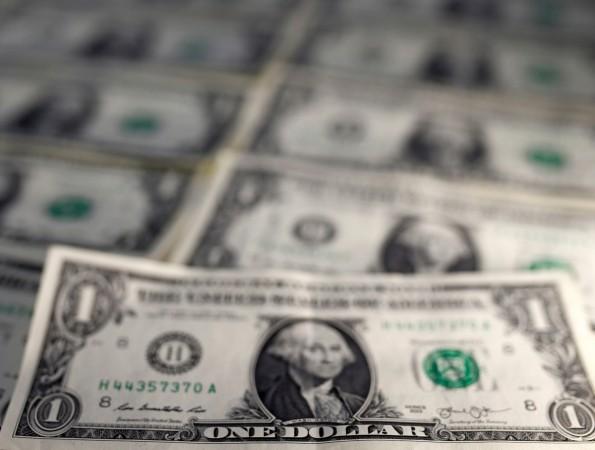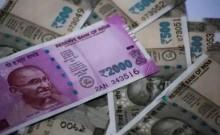
As India demonstrates strengthening macroeconomic foundations, escalating trade tensions with the United States marked by sharply higher tariffs and legislative threats create a defining moment for New Delhi's economic policy and diplomacy. Balancing internal stability with external pressure, India must now engage the shifting landscape of global trade with foresight, negotiation, and resilience.
Domestic Stability: A Rare Window of Opportunity
India's economy continues to exhibit a rare blend of sustained growth and low inflation in 2025. Headline CPI inflation is projected to average between *3.0 and 3.2 percent* in FY26 significantly below the Reserve Bank of India's earlier estimate of 3.7 percent.
Wholesale prices, particularly in the food segment, have softened considerably with *June WPI food inflation turning negative at 0.26 percent*, aided by stable monsoon coverage and easing global commodity prices.
"With inflation under control and fiscal conditions improving, the focus now is on nurturing growth and accelerating investment," said RBI Governor *Shaktikanta Das following the central bank's 25 basis points rate cut in June, the first such move in nearly two years.
Net direct tax collections in Q1 FY26 stood at ₹5.6 trillion, showing only a marginal drop of 1.3 percent year-on-year despite a high base in FY25, while corporate and personal income taxes grew by 3.2 percent, indicating a resilient earnings base.
India's foreign exchange reserves remain above USD 670 billio* and merchandise exports, although flat in June at USD 35.14 billion, are projected to recover in the second half on the back of service sector strength and moderated energy import costs.
Trade Pains: Higher U.S. Tariffs Complicate Recovery
Against this backdrop of domestic stability, external trade shocks are becoming more acute.
The United States, in line with the *America First Trade Policy 2.0* initiatives spearheaded by former President Donald Trump and carried forward in spirit by his political bloc, has recently imposed *tariff increases of up to 30 percent* on select imports from India. These affect sectors of long-standing bilateral importance, including:
- Steel and aluminium
- Auto components and electronic assemblies
- Textiles and apparel
Previously averaging 8 - 12 percent, U.S. tariffs in these lines now reach nearly 30 percent. This move has drawn both industry concern and diplomatic response from New Delhi.
"We're correcting years of unfair treatment. It's a big deal," Trump reportedly remarked at a trade rally in Milwaukee in June, referring to Indian tariffs and market access.
For India, the impact of such tariffs is non-trivial. The United States remains India's largest trade partner in goods and services, hosting over 17 percent of Indian exports, valued at over USD 83 billion annually. Sectors like pharmaceuticals (USD 7.1B export volume), engineering goods (*USD 9.3B*), textiles (USD 7.6B), and jewellery are directly exposed.
"Tariffs of this magnitude erode our competitiveness and job pipelines," said Ajay Sahai, Director General of the Federation of Indian Export Organisations (FIEO).
India's service exports have partially buffered this shock, with Global Capability Centres (GCCs) accounting for more than $100 billion in export value annually. Over 80 new GCCs were launched since the start of 2024, according to NASSCOM.
The Russia Factor: Strategic Energy & Sanctions Risk
Adding to these challenges is the U.S. legislative proposal titled the Sanctioning Russia Act of 2025, which proposes a 500 percent tariff on imports from any country engaging in sustained energy transactions with Russia. India, importing more than 35 percent of its crude oil requirements from Russia at discounted rates of USD 6 - 8 per barrel compared to Brent, is clearly in focus.
A recent Brookings India paper estimates that if applied to India, such a punitive tariff could reduce India's exports to the U.S. by USD 18 - 22 billion annually and shave off 0.6 - 0.8 percent from GDP in FY26.
"Our oil imports from Russia are driven by economic rationale, not political alignment," said former Energy Secretary Tarun Kapoor. "They help manage inflation and reduce our FX exposure at a time of geopolitical volatility."
India's argument rests on energy security imperatives and precedents of the U.S. importing uranium from Russia while expecting others to curtail trade.
Strategic Realignment: India's Policy Response
India's response is multi-dimensional, combining diplomatic engagement, trade rebalancing, and domestic industrial reinforcement.
Diplomatically, the Ministry of External Affairs and Ministry of Commerce are engaging U.S. counterparts to seek exemptions or phased implementation of tariff measures. India is building its case on Indo-Pacific alignment, counterterrorism cooperation, and longstanding defence collaboration.
Energy diversification has been accelerated. The Petroleum Ministry is exploring expanded supply agreements with Guyana, Brazil, Angola, and UAE. Refining adjustments are underway to handle alternative crudes, and long-term investments in domestic refining infrastructure have received new fiscal backing.
On trade, India is fast-tracking FTA agreements with:
- The European Union (expected conclusion by late-2025)
- Australia (Phase II: Services & Mutual Standards)
- Africa (AfCFTA)
- UK (India-UK FTA in final draft)
Simultaneously, the Production Linked Incentive (PLI) scheme has been expanded to support MSMEs in vulnerable export categories like engineering and auto parts.
"India cannot afford reactiveism. It must calibrate its rise with long-term buffers and deeper market integration," noted economist Viral Acharya in his remarks at the India Policy Forum 2025.
Shaping the Global Trading Future
India's current trade challenge highlights two key realities. First, its evolving role demands a transition from reactive negotiation toward proactive trade architecture. Second, global trade, in its current trajectory, will likely favour aligned blocs and regional coalitions rather than open multilateralism.
In such a world, India's success requires:
- Reducing reliance on single markets
- Building scale in domestic value chains
- Enhancing logistical efficiency and port infrastructure
- Expanding rupee-based and dual-currency trade mechanisms
- Leading in digital services, green manufacturing, and AI-powered exports
India's forex reserves, growing FDI inflows (USD 45 billion in FY25), and deepening startup ecosystem provide strategic confidence. The coming years must transform that confidence into structural strategic advantage.
Calibrated Sovereignty for a Shifting Order
India stands at a critical economic juncture. The combination of sound domestic macroeconomics and rising external frictions presents both a test and an opportunity. In responding to higher U.S. tariffs and geopolitical pressures, India must reinforce its fundamentals, diversify its markets, and accelerate its path to becoming a key shaper of the 21st-century trade order.
"India must not merely withstand uncertainty. It must shape the conditions under which economic ambition thrives," said Dr Montek Singh Ahluwalia, former Deputy Chairman of the Planning Commission.
[Major General Dr Dilawar Singh is Senior Vice President of the Global Economist Forum. He writes regularly on global trade, economic strategy, and national resilience.]







